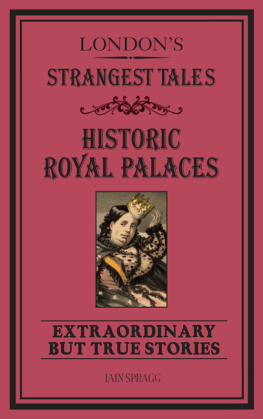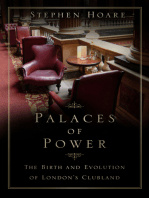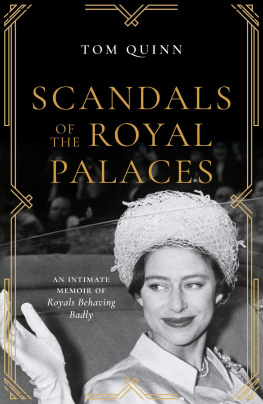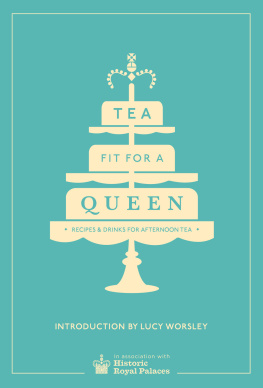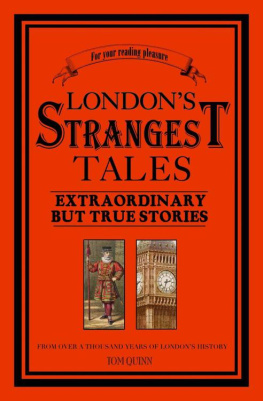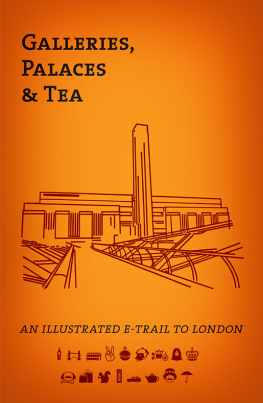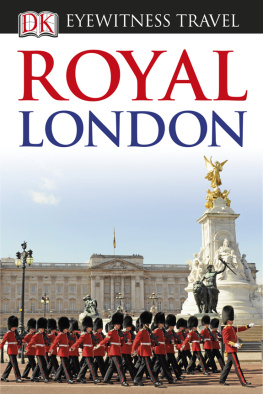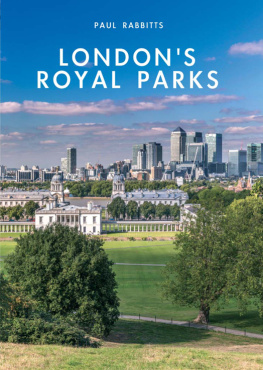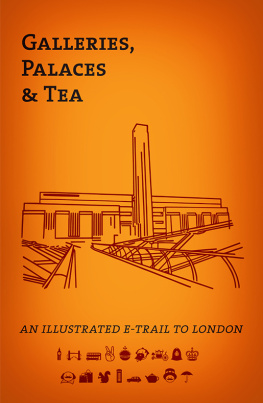
More Great Titles from Batsford
Founded in 1843, Batsford is an imprint with an illustrious heritage that has built a tradition of excellence over the last 168 years. Batsford has developed an enviable reputation in the areas of fashion and design, embroidery and textiles, chess, heritage, horticulture and architecture .
tap on titles below to read more



 | @BatsfordBooks |
 | Batsford Books |
 | www.batsford.com |

First published in the United Kingdom as paperback and eBook in 2014 by Batsford
1 Gower Street
London WC1E 6HD
Twitter: @BatsfordBooks
An imprint of Pavilion Books Group Ltd
www.pavilionbooks.com
Copyright Portico, 2014
Cover image Mary Evans Picture Library
All rights reserved. No part of this publication may be reproduced, stored in a retrieval system, or transmitted in any form or by any means electronic, mechanical, photocopying, recording or otherwise, without the prior written permission of the copyright owner.
eBook ISBN 9781849941891
paperback ISBN 9781909396470
This book can be ordered direct from the publisher at
www.pavilionbooks.com, or try your local bookshop.
INTRODUCTION
The Royal Family is today synonymous with the splendour and grandeur of Buckingham Palace. Iconic images of the Royals assembled on the famous balcony on the East Front on state occasions are the epitome of the British Establishment and, notwithstanding the sight of comedian Peter Kay dressed as a Beefeater on the roof of the palace during The Queens Diamond Jubilee concert in 2012, the building remains the architectural embodiment of the monarchy.
Buckingham Palace, however, is a relatively recent addition to the royal property portfolio. Queen Victoria only picked up the keys to the place after her accession to the throne in 1837. Before her long and popular reign, the Royal Family once called five other palaces in London home.
Londons Strangest Tales: Historic Royal Palaces charts and celebrates the fascinating stories of this quintet of historic buildings.
Known collectively as the Historic Royal Palaces, the Tower of London, Hampton Court Palace, the Banqueting House, Kew Palace and Kensington Palace have all provided a roof over the head of royalty over the centuries. Over the last thousand years, all five have stood silent witness to British history in the making.
It was William the Conqueror who began the regal property boom in the capital, commissioning the construction of the imposing Tower of London in 1066 following his triumph at the Battle of Hastings, a victory which gave him the crown and the country. Henry VIII subsequently gave Hampton Court the royal seal of approval in 1529 when he evicted the hapless Cardinal Wolsey, while James Is desire for a London party pad was the catalyst for the building of the third incarnation of the Banqueting House in 1619. It was domestic considerations that prompted King George II to relocate his rapidly expanding family into Kew Palace in 1729, while the asthmatic William III was attracted to Kensington 60 years later because the location was esteemd with a very good air, the monarch paying 20,000 to persuade the resident owner to vacate the premises.
Each palace was to enjoy varying lengths of residential service. Parts of Kensington still house members of the Royal Family, with William, Kate and their son George the new arrivals in 2013, but all five residences eventually fell from favour. They are now preserved for the public and for prosperity by the charity Historic Royal Palaces.
The Tower of Londons grisly reputation for torture and execution precedes it. Its certainly true that many a poor soul spent their final, miserable hours within the confines of its now infamous walls but the Towers ongoing history is as intriguing as it is undeniably murderous.
From the bizarre tale of the first alcohol-assisted escape from its cells, King Haakons voracious polar bear, the reluctant visit of Ronnie and Reggie Kray and the closely guarded arrival of the medals for the London Olympics in 2012, life at the Tower over the centuries has never been dull.
The story of Hampton Court is equally captivating. From Wolseys unfortunate terror at the palaces eight-legged interlopers to William Shakespeare and his Globe players Christmas sojourn, Anne Boleyns penchant for gambling at the tennis courts and its unlikely 19th-century suffragette house guest, the palace has always been a hotbed of curios which have frequently eclipsed even Hamptons famous maze.
The Banqueting Houses stint as a royal residence was as brief as it was eventful and over the years the palace has impassively observed the countrys first incident of state-sponsored regicide, the surreal ritual of the monarch attempting to cure disease with a touch of the regal hand, James IIs futile attempts to cling to power by mounting a weather vane on the roof of the building and the macabre arrival of the skeletal remains of Napoleons horse.
Kew may be the most modest of our five palaces in terms of size and scope but while it lacks stature, it does not disappoint in terms of tantalising tales that include the strange story of the demolition of the first mosque ever built in Britain, an improbable mob of resident kangaroos, a very literal interpretation of Swan Lake and the superstitious 17th-century craftsmen who built the palace.
In contrast it is the litany of unusual guests, invited or sometimes otherwise, who have made their way to Kensington over the years that have lit up its unusual history. The mugger who accosted George II in the palace gardens at pistol point was most definitely intruder rather than invitee, while the American Indian chief Tomochichi who turned up for a meet-and-greet with the same monarch may have been an unusual sight in 18th-century England but was at least on the guest list.
Peter, the tragic, feral child who was unceremoniously shipped over from Germany, was another incongruous but scheduled visitor to Kensington, while the abrupt arrival of the Grim Reaper as George II sat on the royal toilet was certainly not the palaces most edifying appointment.
Sometimes the pomp and ceremony of a state occasion has spawned the surreal or the silly, as the unfortunate Persian ambassador who unwittingly insulted Charles I at Banqueting House could testify, while other intriguing palace stories arise from more private royal moments, such as Victorias dressing-gown diplomacy at Kensington when she was informed she was the new queen on 20th June 1837.
The Historic Royal Palaces of London remain a striking depository of the nations collective history and this book explores the most memorable and frequently comic events and incidents they have witnessed since they first opened their doors to their myriad royal occupants.
Next page
